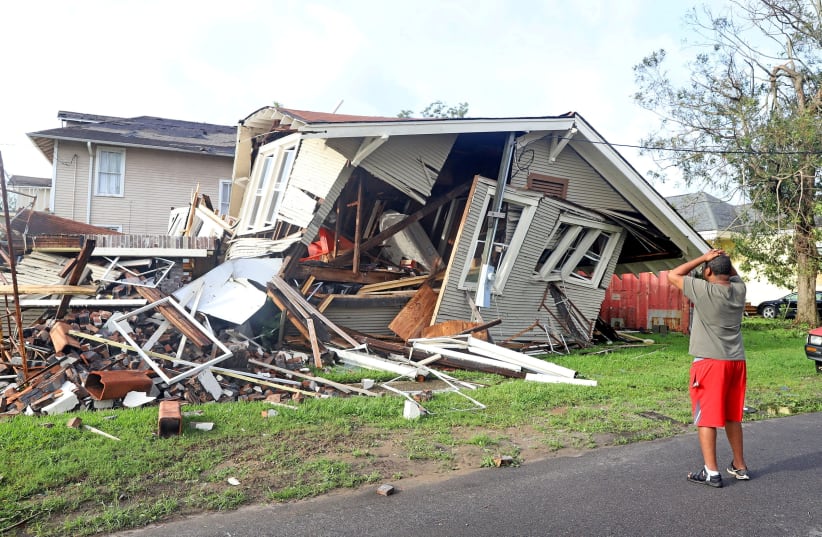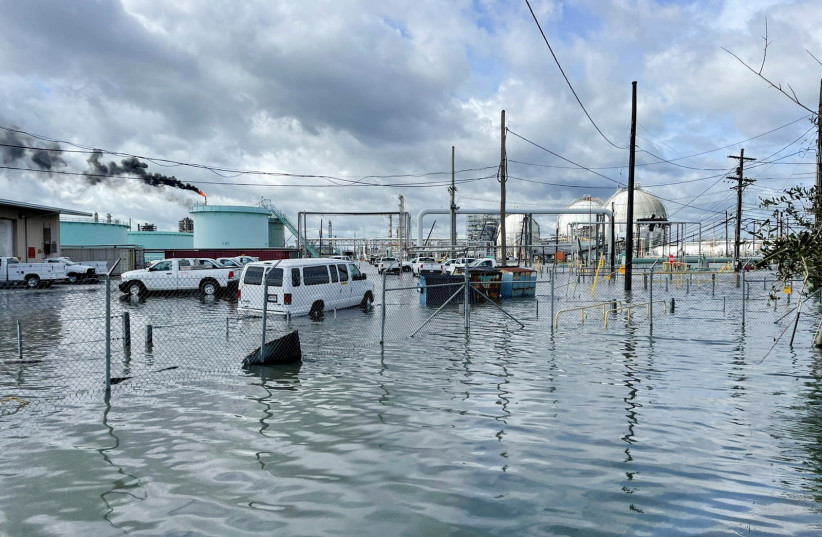Evacuees who fled Hurricane Ida before the powerful storm hammered southern Louisiana are being urged not to return home yet with power out across much of the state and officials scrambling to supply food, water and other essentials.
Three days after the Category 4 hurricane came ashore, more than a million homes and businesses remained without electricity in the US Gulf Coast region, although power was restored to some customers in the eastern part of New Orleans on Wednesday morning, Entergy Corp said. The utility warned it may take weeks to return service in some areas where transmission towers had crumpled into heaps of metal.
The number of fatalities rose to six on Wednesday following the confirmed deaths of two electricity workers in Alabama who had been repairing the power grid, according to an executive with Pike Electric. Thousands more were in misery, with countless homes destroyed and towns flooded, evoking memories of Hurricane Katrina, which killed some 1,800 and nearly destroyed New Orleans 16 years ago.
The damage may have been much worse if not for the $14.5 billion levee and floodwall system built after Katrina to protect New Orleans. Areas outside the system's perimeter suffered the most damage. In Jean Lafitte, a levee that was not part of the system was overwhelmed by floodwaters, inundating the town just south of New Orleans.
"Katrina didn't bring water," Timothy Kerner Sr., a state lawmaker whose district includes Jean Lafitte, told Reuters in a phone interview. "This was so much more, a 100-year storm that hit us in the worst possible way."
Although weakened, Ida still posed a threat to parts of the United States on Wednesday. The National Weather Service warned that the remnants of the storm could dump up to eight inches of rain across the Mid-Atlantic region into southern New England, triggering "potentially life-threatening" flooding.
In the Pittsburgh suburb of Shaler Township, students had to be rescued by boats from a school bus that became stranded in flood waters on Wednesday morning. WTAE-TV, which aired video of the rescue, said all students were safe.
Along the Gulf Coast, officials were unable to complete a full damage assessment because fallen trees were blocking many roads, US Federal Emergency Management Agency chief Deanne Criswell said.
Amid signs of desperation, cars lined up for at least three miles for gasoline at a station in New Orleans that had fuel, while in Lockport, Louisiana volunteers distributed drinking water to residents who had formed a queue of nearly a mile.
Lockport is near one of the hardest-hit towns, Houma, population 33,000 and about 50 miles (80 km) southwest of New Orleans. The storm ripped off roofs and felled power lines as it hovered over the area for hours, maintaining much of its strength.
Officials of Terrebonne Parish, which includes Houma, issued a statement imploring people not to return, saying there was no electricity, water service was unreliable, emergency shelters were damaged, and none of the hospitals were operating.
"Evacuees: DO NOT, DO NOT, DO NOT come back to Terrebonne Parish if you evacuated," officials said in an advisory posted on Twitter by a reporter for WWL television.
"There is NO medical care because there are no operating hospitals in Terrebonne Parish right now," the notice said, adding that previously admitted patients were being moved.
Houma residents Scott and Daria Hebert told WAFB television they regretted not evacuating ahead of time and were attempting to flee on Tuesday.
"It was just so tenacious. It just stayed, probably seven or eight hours of just hammering us," Scott Hebert said.
"This was our Katrina, basically," Daria Hebert added.
Compounding the suffering, parts of Louisiana and Mississippi were under heat advisories, with a heat index in much of the area reaching 95 degrees Fahrenheit (35 degrees Celsius) on Tuesday, the National Weather Service said.
Even the power generators were hazardous. Nine people in St. Tammany Parish northeast of New Orleans were taken to hospital overnight for carbon monoxide poisoning from a gas-fueled generator, local media reported.
Among the six deaths were two people killed in the collapse of a southeastern Mississippi highway that critically injured 10 others. One man died attempting to drive through high water in New Orleans and another when a tree fell on a Baton Rouge home.

